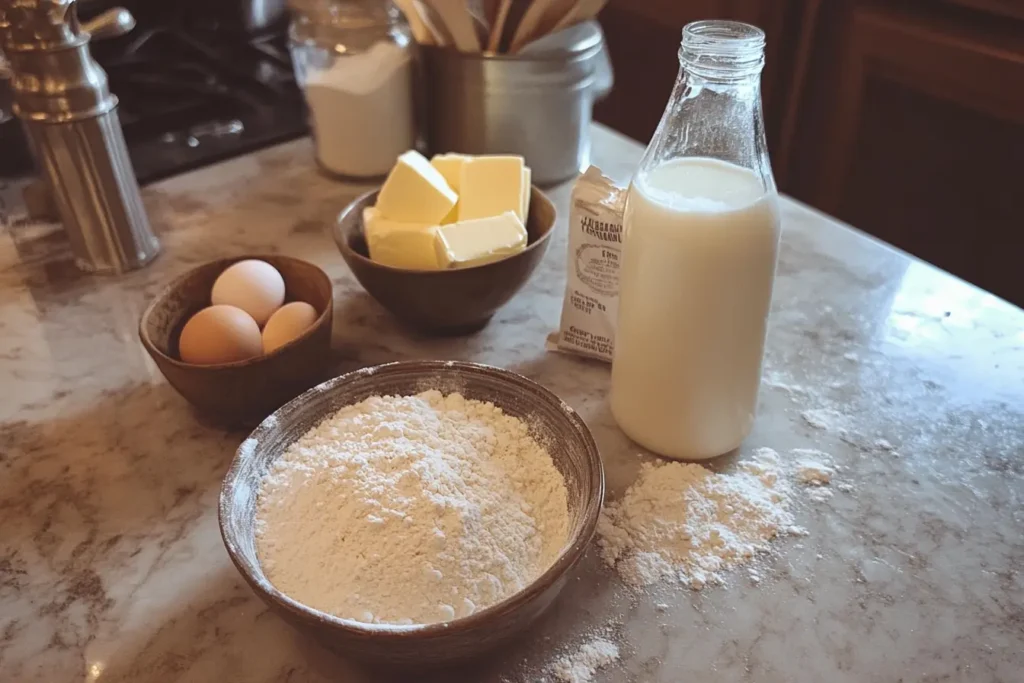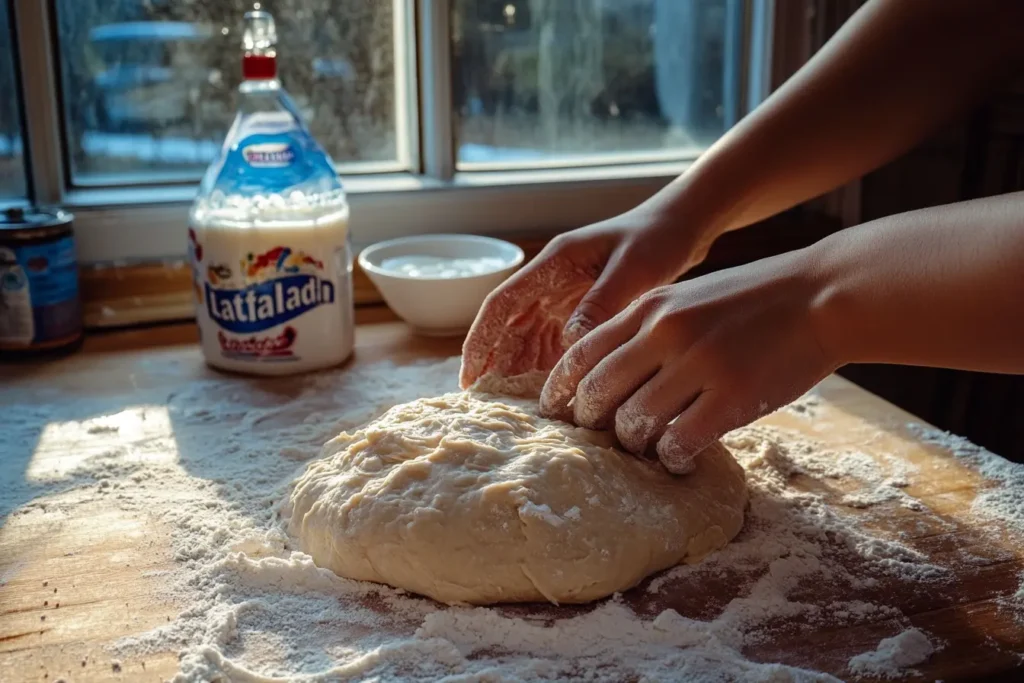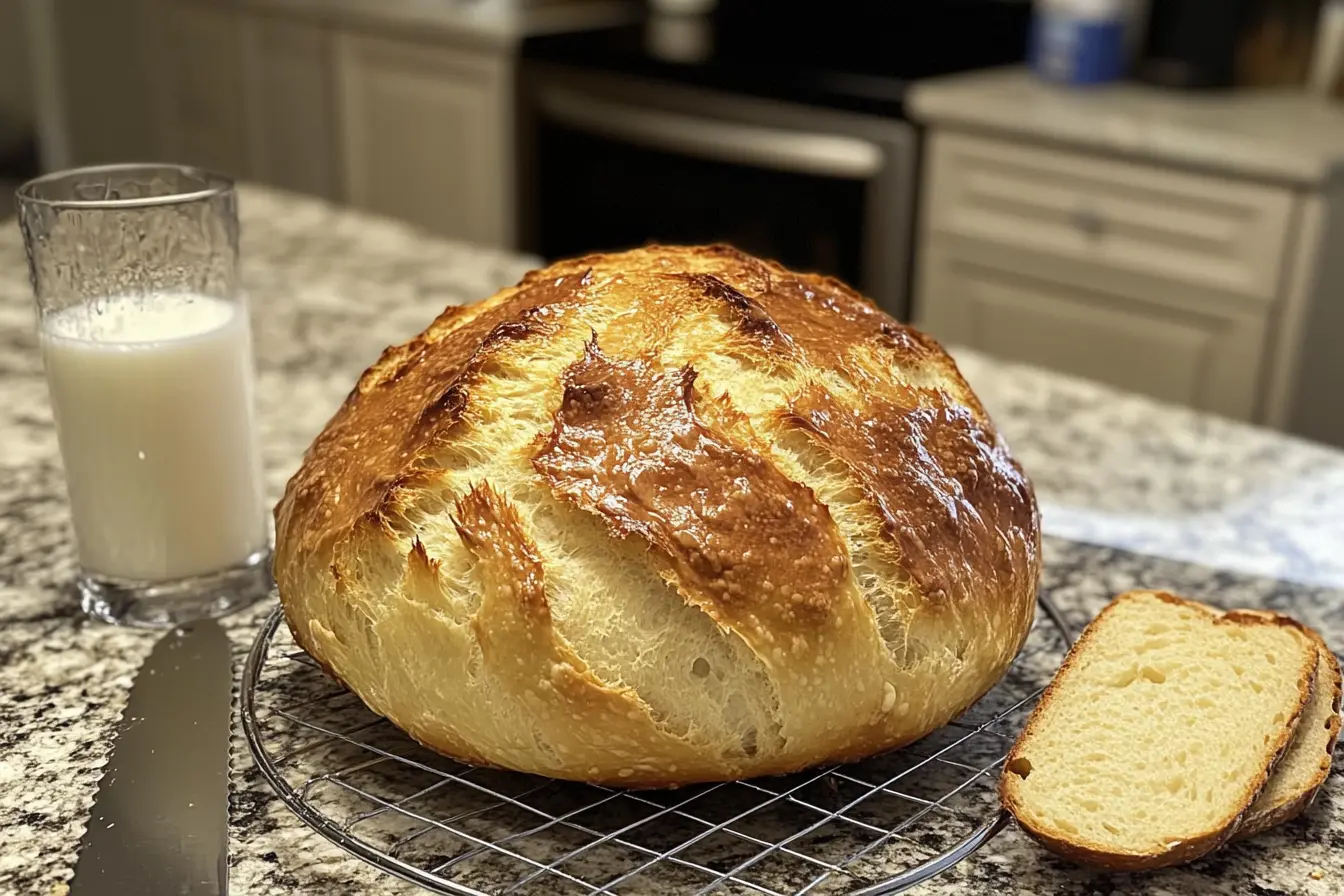Introduction
When it comes to baking bread, milk plays a subtle yet crucial role in shaping flavor, texture, and crust. For those seeking lactose-free options, the question arises: Can Lactaid truly replace regular milk in bread recipes? This article dives deep into the science and practicality of using Lactaid in your favorite bread recipes. We’ll explore how it impacts the dough, the final loaf, and how to make the most of this lactose-free alternative in your kitchen. Let’s unravel the possibilities of incorporating Lactaid into bread recipes, ensuring every loaf is as delightful as ever.
Can I Use Lactaid in Bread Recipes?
Bread baking is an age-old tradition, but modern dietary needs often demand innovative adjustments. Enter Lactaid, a lactose-free milk that promises to open doors for those with lactose intolerance. So, can you confidently use Lactaid in bread recipes? Absolutely! However, it’s essential to understand how this substitution works and what changes, if any, it brings to your dough.
One of the greatest strengths of Lactaid is its similarity to regular milk in terms of consistency and nutritional content. This makes it a seamless replacement in most recipes. Whether you’re crafting a fluffy brioche, a hearty whole-grain loaf, or a delicate baguette, Lactaid can stand in for milk without disrupting the chemistry of your bread. However, the slight sweetness in Lactaid, a result of its lactose breakdown, might require minor adjustments depending on your recipe.
Understanding Lactaid and Its Composition
To truly appreciate how Lactaid fits into bread recipes, it’s crucial to understand its composition and how it differs from regular milk. Unlike ordinary milk, Lactaid undergoes a process where the lactose (a natural sugar found in milk) is broken down into simpler sugars like glucose and galactose. This makes it easier to digest, especially for individuals with lactose intolerance. While the breakdown of lactose enhances sweetness slightly, Lactaid retains a similar consistency and nutrient profile to regular milk, making it a convenient substitute in most recipes.

Recipe: Bread Made with Lactaid
Ingredients:
- 3 ½ cups (450g) bread flour
- 1 cup (240ml) Lactaid milk (lukewarm)
- 2 ¼ tsp (7g) instant yeast
- 2 tbsp (25g) sugar
- 1 tsp (6g) salt
- 3 tbsp (45g) unsalted butter, softened
- 1 large egg (optional, for enriched doughs)
Instructions:
- Activate the Yeast:
In a small bowl, mix the lukewarm Lactaid milk with the sugar. Sprinkle the instant yeast on top and let it sit for 5-7 minutes until it becomes foamy. This ensures the yeast is active and ready to work. - Combine the Dry Ingredients:
In a large mixing bowl, whisk together the bread flour and salt. Ensure they are evenly distributed to avoid pockets of salt in the dough. - Mix the Wet Ingredients:
Pour the yeast mixture into the dry ingredients. If using an egg, add it now. Begin mixing until a rough dough forms. - Knead the Dough:
Transfer the dough to a floured surface and knead it by hand for 8-10 minutes, or use a stand mixer with a dough hook for about 5-7 minutes. Add the softened butter gradually during the kneading process. The dough should become smooth, elastic, and slightly tacky. - First Rise:
Place the dough in a lightly oiled bowl, cover it with a clean kitchen towel, and let it rise in a warm place for 1-2 hours, or until it doubles in size. Lactaid’s natural sugars will provide sufficient fuel for yeast activity. - Shape the Dough:
Once risen, punch the dough down to release air bubbles. Shape it into a loaf or divide it into rolls. Place the dough into a greased loaf pan or onto a baking sheet lined with parchment paper. - Second Rise:
Cover the shaped dough and let it rise again for about 30-45 minutes, until it becomes puffy. - Bake the Bread:
Preheat the oven to 375°F (190°C). Bake the bread for 25-30 minutes, or until the crust is golden brown and the loaf sounds hollow when tapped on the bottom. - Cool and Serve:
Allow the bread to cool on a wire rack before slicing. This ensures the crumb sets properly and prevents it from becoming gummy.

Nutritional Content (Per 100g):
| Nutrient | Amount |
|---|---|
| Calories | 250 kcal |
| Protein | 8g |
| Fat | 5g |
| Carbohydrates | 40g |
| Fiber | 2g |
| Sugar | 5g |
| Sodium | 250mg |
The Role of Milk in Bread Making
Milk, whether it’s regular or lactose-free like Lactaid, plays an integral role in the bread-making process. It goes beyond simply hydrating the dough; milk contributes to the flavor, texture, and overall structure of the bread. But how exactly does it work its magic? Let’s delve into the details.
Enhancing Dough Texture and Flavor
Milk adds a subtle richness to bread, giving it a tender crumb and a slightly sweet flavor. This richness is especially noticeable in enriched doughs, such as brioche or challah, where milk combines with butter and eggs to create a velvety texture. The proteins in milk also contribute to the softening of the dough, helping the gluten network relax just enough to make the bread less chewy.
When using Lactaid instead of regular milk, the natural sweetness from the breakdown of lactose enhances the flavor without requiring additional sugar. This can result in a more pronounced, yet balanced, taste.
Activating Yeast: The Importance of Lactose
Yeast, the tiny organism responsible for fermentation, thrives on sugar. In traditional bread recipes, lactose in milk acts as a food source for the yeast, fueling its activity and creating the bubbles that make bread rise. Lactaid performs this function beautifully, as its glucose and galactose components are readily digestible by yeast.
What’s more, the consistent quality of Lactaid ensures a predictable outcome every time you bake. However, because Lactaid is slightly sweeter, bakers may find that they need to slightly adjust the sugar content in their recipes to maintain balance.
Substituting Lactaid for Regular Milk in Bread Recipes
Substituting Lactaid for regular milk in bread recipes is surprisingly straightforward, but like any substitution, a few nuances can make all the difference in the final result. From getting the right ratios to adjusting sweetness, here’s everything you need to know.
Direct Substitution Ratios
The beauty of Lactaid lies in its ability to seamlessly replace milk at a 1:1 ratio. Whether your recipe calls for whole milk, low-fat milk, or even skim milk, Lactaid can take its place without the need for complex calculations. Simply measure the same amount of Lactaid as you would regular milk, and proceed with your recipe as usual.
For enriched doughs, where milk contributes significantly to texture and richness, using Lactaid ensures you’ll achieve the same softness and velvety crumb without compromising flavor or structure.
Adjusting for Sweetness Variations
One notable difference between Lactaid and regular milk is its natural sweetness. Since Lactaid’s lactose is already broken down, it tends to taste slightly sweeter than its conventional counterpart. For most bread recipes, this sweetness is subtle enough to go unnoticed. However, in recipes that are already sweetened—such as cinnamon rolls or challah—you might want to reduce the added sugar by 1-2 teaspoons to avoid overpowering the flavors.
Another option is to embrace the extra sweetness. In savory breads like focaccia or sandwich loaves, the gentle sweetness of Lactaid can add depth to the flavor profile without making the bread taste sugary.
Effects of Lactaid on Bread Texture and Flavor
When using Lactaid in bread recipes, its unique composition influences the texture and flavor of the final product. Understanding these effects helps bakers fine-tune their recipes and achieve the perfect loaf every time.
Potential Changes in Crumb Structure
Milk, in general, contributes to the softness and elasticity of bread, creating a tender crumb that’s perfect for rolls, sandwich loaves, and enriched doughs. With Lactaid, these characteristics remain intact. Its proteins interact with the gluten network in much the same way as regular milk, ensuring a fluffy, cohesive structure.
However, the slight sweetness of Lactaid can subtly alter how the crust browns during baking. This happens because the glucose and galactose in Lactaid encourage a more pronounced Maillard reaction—a chemical process responsible for the golden-brown crust. The result is a loaf with an even more appealing appearance.
Flavor Profile Considerations
The flavor of bread made with Lactaid is slightly sweeter and more nuanced than that made with regular milk. This enhancement works wonderfully in both sweet and savory recipes. Imagine the soft sweetness of dinner rolls paired with a hearty soup, or the delicate crumb of milk bread complementing a light jam.
That said, bakers should always taste-test their recipes, particularly when experimenting with savory breads. A simple adjustment to the salt or sugar content can harmonize the flavors.
Browning and Crust Development with Lactaid
Achieving the perfect crust is a hallmark of great bread, and Lactaid can play an exciting role in enhancing this aspect. From the Maillard reaction to the golden hue of your loaf, here’s how Lactaid influences crust development.
Maillard Reaction and Sugar Content
The Maillard reaction is the chemical process responsible for browning and creating that tantalizing aroma of freshly baked bread. Sugars and proteins interact at high temperatures, producing a golden-brown crust and complex flavors. With Lactaid, the glucose and galactose content (products of broken-down lactose) accelerate this reaction, leading to an even deeper browning compared to regular milk.
This heightened browning effect is particularly beneficial for bread with a glossy, enriched crust, such as brioche or dinner rolls. If you’re looking for a lighter crust color, consider reducing oven temperature slightly or covering the bread with foil during the last few minutes of baking.
Achieving Desired Crust Color
To achieve your preferred crust color while using Lactaid, pay attention to baking times and temperature. Start by baking your bread at the recommended temperature, but keep an eye on it toward the end of the baking process. If the crust darkens too quickly, lowering the temperature by 10–15°F (5–8°C) can help.
For an even shinier crust, brush the dough with an egg wash (a beaten egg mixed with a tablespoon of Lactaid) just before baking. This technique not only enhances color but also provides a lovely sheen.
Frequently Asked Questions
Can Lactaid be used in all types of bread recipes?
Yes, Lactaid works well in nearly all types of bread recipes, from basic sandwich loaves to enriched doughs like brioche and challah. Its similar consistency and nutrient profile make it an excellent substitute for regular milk. However, slight adjustments may be needed for sweetness in some recipes.
Do I need to modify yeast quantities when using Lactaid?
No, you don’t need to change the yeast quantity when using Lactaid. The natural sugars in Lactaid (glucose and galactose) are readily digestible by yeast, making it just as effective as regular milk for fermentation.
Will using Lactaid affect the shelf life of my bread?
Bread made with Lactaid typically has the same shelf life as bread made with regular milk. The lactose-free nature of Lactaid does not impact the bread’s preservation. Proper storage, such as keeping bread in an airtight container, will help maintain freshness.
Are there any breads where Lactaid is not recommended?
While Lactaid is versatile, recipes that rely on non-dairy milk for specific flavors (such as almond or soy milk in specialty loaves) might not benefit from Lactaid’s sweetness. It’s best used in recipes that traditionally call for regular milk.
How does Lactaid impact gluten development in dough?
Lactaid doesn’t negatively impact gluten development. In fact, its proteins support the formation of a strong, elastic dough, resulting in a tender crumb. The bread’s texture remains comparable to that made with regular milk.
Can Lactaid be used in combination with other dairy-free milk alternatives?
Yes, you can combine Lactaid with other dairy-free options like almond or oat milk to customize flavors and textures. This approach works particularly well in recipes like multi-grain or nutty breads, where diverse ingredients are celebrated.

